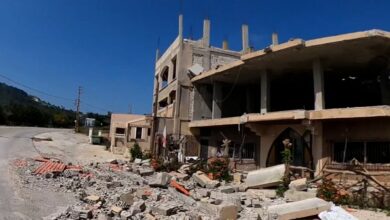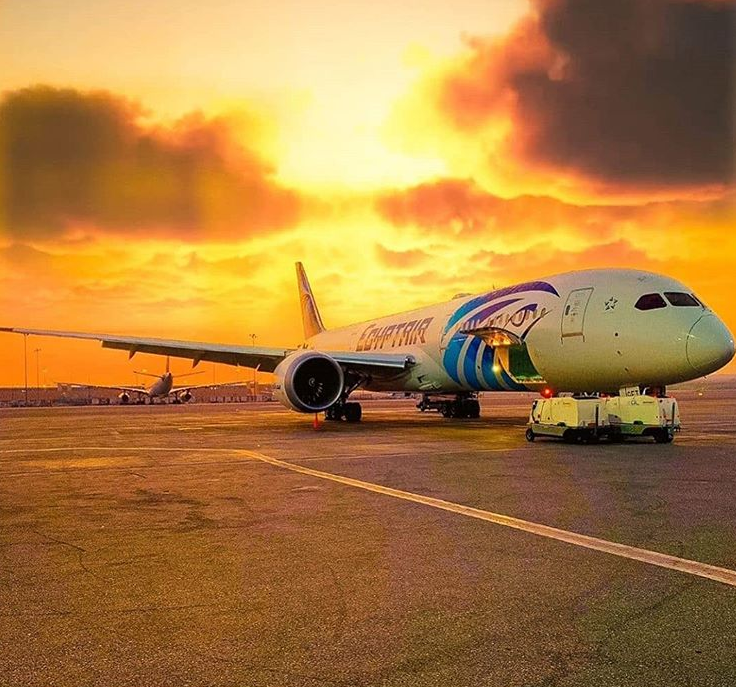Lamia Ziade’s “Bye Bye Babylon: Beirut 1975-1979” opens with bright, pop-art representations of US and UK products. We see Bazooka bubble gum, Kraft’s “rainbow flavor” marshmallows, Planter’s cocktail peanuts, and a psychedelic Spinney’s shopping cart. After this: Kalashnikovs, RPGs, Marakovs, and tanks.
Although Ziade’s words contrast the imported supermarket “paradise” with the violence that follows in Lebanon, the images of food and guns seem to bleed into one another. Libby’s bright-red ketchup looks different when side-by-side with a Kalashnikov. Kellogg’s Smacks (water pistol inside!) look eerily menacing when shoulder to shoulder with a Slavia.
Guns, grenades, and imported foodstuffs are on an equal footing here: All of them could be thrown in your cart at Spinney’s, rung up on a cash register, stuffed into a plastic bag, and brought home.
The first people to appear in the book are two psychedelically-dressed young men. One is showing chest hair and toting an RPG while the other waves a Kalashnikov. Behind them is a rainbow-and-flowers advertisement for 7-UP. This memoir of a childhood lived during Lebanon’s recent civil war doesn’t offer deep political analysis. In fact, the brightly colored violence seems to burst out of nowhere. One day, Ziade was shopping happily at Spinney’s, and the next her city burns.
While characters like Elias Sarkis, Hafez al-Assad, Suleiman Frangieh, and Camille Chamoun flicker across the screen, the narrative doesn’t spend its time giving deep (or much of any) background. For the most part, Ziade throws up her hands in the face of war’s brutality. After displaying and describing an array of weapons, Ziade writes of the fighters as though they were children with new toys:
There is a vast choice of artillery for militias and civilians alike. Both factions have two things in common: a suicidal appetite for violence, and a fascination with destruction. They are restlessly waiting for an opportunity to try out their weapons.
Surely, there are other reasons for this violence – some of which Ziade will address later – but she narrates it as a child would, focusing on the small, personal details.
“Bye Bye Babylon” is not a traditional graphic novel, with drawings held in frames and accompanied by captions. Instead, sections of typescript narrative are followed by childish-looking, brightly colored images, or even several pages of pictures.
The effect of these multiple pages of images is an imposed silence, a moment of respect for what was lost in the war.
While she throws in explanations of the figureheads, the focus of “Bye Bye Babylon” is on Ziade’s life as it was lived, as a child, from 1975 to 1979. Atrocities are often narrated from her childish perspective. Because of the massacre of Palestinians at Tall al-Zaatar, Ziade doesn’t get a party for her ninth birthday. Kamal Jumblatt is assassinated just days before her first communion, and so the “ceremony takes place in the underground parking lot of an abandoned building used by my substitute school, the Athenee – we can no longer get to Nazareth. It’s the type of place where little girls get raped, not where they meet the good Lord.”
The child narrator’s sweaty grip is a good companion on a sometimes fantastically horrible journey. She is never quite sure what’s true and what’s false. She wants to know who really are the “bad guys” and is disappointed by her father’s complicated explanation.
The names of western products burn; washing machines are looted; characters wear fashionable clothes and almost always display their gold chains and chest hair.
Readers unfamiliar with the conflict won’t be able to follow the many factions, splinter groups, counter factions. But these aren’t important here. It’s less important to establish who did what than it is to explain how it affected this little girl. But in the background, we can still see how war is ritualized, commercialized, capitalized on, and profited from. War wasn’t just a horrible monster that everyone wanted to escape as soon as humanly possible. War was profitable. War was good for (some people’s) business.
This novel, published in French in 2010 and out now in English translation by Olivia Snaije, doesn’t get us off the path of violence. It shows a road of conflict that is long, and that creates its own energies and profits, its own rituals and counter-rituals. Weapons, like cocktail peanuts, can be bought and consumed. War is just another product.




